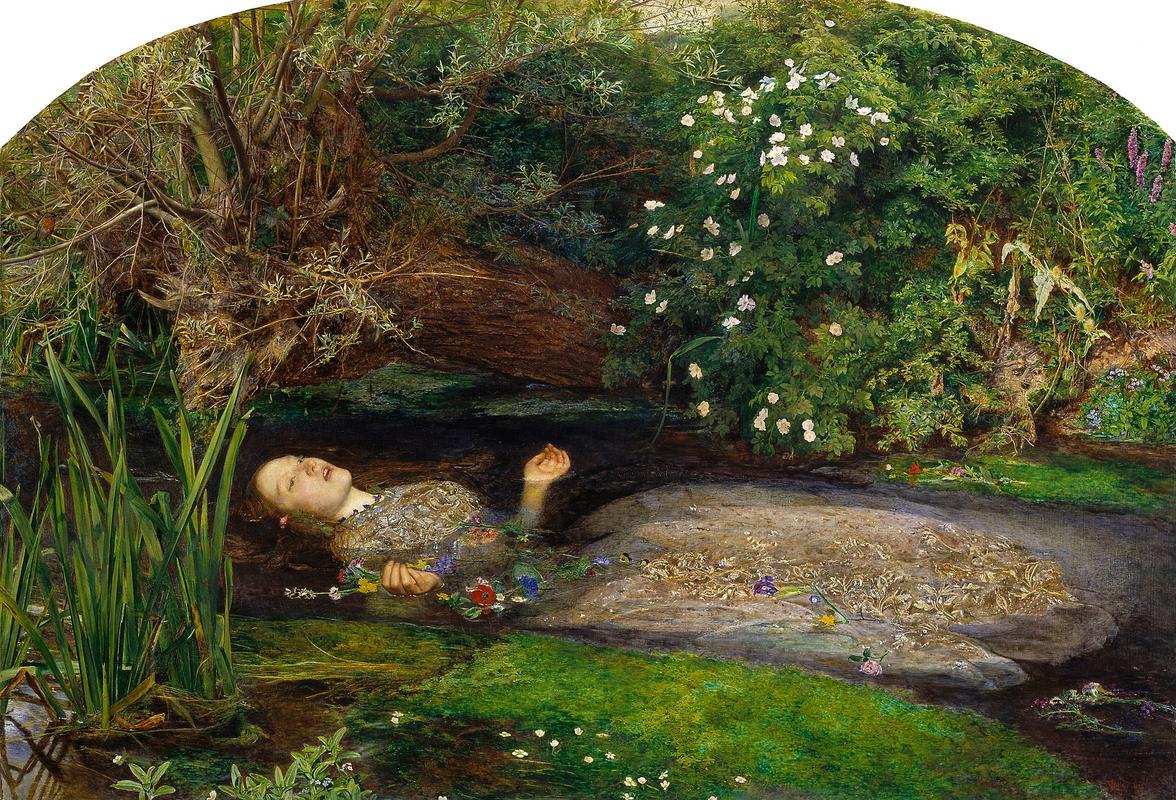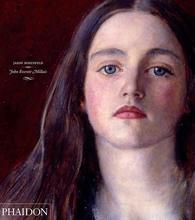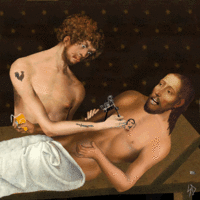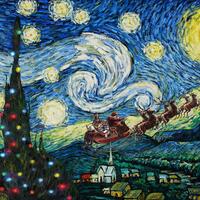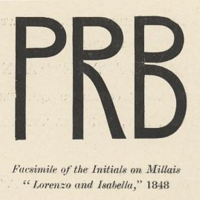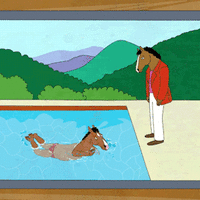More about Ophelia
- All
- Info
- Shop

Sr. Editor
Death rendered as beauty in Millais' painting of Ophelia.
The model is Elizabeth Siddal, the wife of artist Dante Rossetti.
Dante and Millais started a gang together called the Pre Raphaelite Brotherhood. One of the benefits of being in the gang was you got to paint the other guy's wife. Another benefit was that you got a free subscription to their magazine, which was called The Germ.
Millais had Siddal pose in a bathtub using lamps to heat the water. Once when the lamps went out Millais continued painting letting poor Elizabeth freeze for hours. Elizabeth's father believed this one session caused her to catch a cold and he charged Millais £50 for medical expenses.
For the natural scenery Millais went down to the Hogsmill River in Ewell. He spent five months there.
The scene is described in Act IV, Scene VII of Shakespeare’s Hamlet in a speech by Queen Gertrude.
There was originally a water vole swimming next to Ophelia but after some of Millais' friends couldn't figure out what it was (rabbit? cat?) he painted over it. If you're ever lucky enough to see this painting unframed there is a rough sketch in the upper corner.
Ophelia is mimicked many times in pop culture. Kylie Minogue imitates the pose in Nick Cave’s music video for Where the Wild Roses Grow and Kirsten Dunst poses the same way for her movie Melancholia (2011).
Featured Content
Here is what Wikipedia says about Ophelia (painting)
Ophelia is an 1851–52 painting by British artist Sir John Everett Millais in the collection of Tate Britain, London. It depicts Ophelia, a character from William Shakespeare's play Hamlet, singing before she drowns in a river.
The work encountered a mixed response when first exhibited at the Royal Academy, but has since come to be admired as one of the most important works of the mid-nineteenth century for its beauty, its accurate depiction of a natural landscape, and its influence on artists from John William Waterhouse and Salvador Dalí to Peter Blake, Ed Ruscha and Friedrich Heyser.
Check out the full Wikipedia article about Ophelia (painting)

